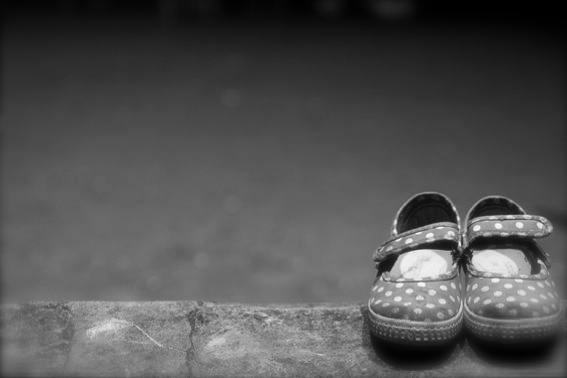Happy Ending

- SUBSCRIBE
- ALREADY SUBSCRIBED?
BECOME A BONJOUR PARIS MEMBER
Gain full access to our collection of over 5,000 articles and bring the City of Light into your life. Just 60 USD per year.
Find out why you should become a member here.
Sign in
Fill in your credentials below.
 The only reason I’ve ever to come to this little street and looked down it or occasionally walked from one end to the other is the Italian market on the corner. It must be an act of faith. The market is almost always closed when I show up—the owner seems to be working on the round-the-clock siesta and he’s sure as hell gaining on it. Or, if it happens to be open, there’s nothing I’m looking for. If I ask for spinach pasta or marinated garlic cloves, I get a look and a wrinkled nose that suggest I have proposed an unnatural act. I leave quickly, having learned to make my requests, or propositions, from the doorway.
The only reason I’ve ever to come to this little street and looked down it or occasionally walked from one end to the other is the Italian market on the corner. It must be an act of faith. The market is almost always closed when I show up—the owner seems to be working on the round-the-clock siesta and he’s sure as hell gaining on it. Or, if it happens to be open, there’s nothing I’m looking for. If I ask for spinach pasta or marinated garlic cloves, I get a look and a wrinkled nose that suggest I have proposed an unnatural act. I leave quickly, having learned to make my requests, or propositions, from the doorway.
Going back the way I came isn’t particularly interesting most days, and certainly not today, because the butcher, the baker, and the cheese mover-and-shaker have all taken their cues for a nap from the Italian. The Mediterranean circadian clock has established a beachhead on a dark street in Paris and is blasting away at me with languorous volleys of la dolce far niente. I duck into the little street for cover, catch my breath, and, recovering my dignity or at least my poise, stroll.
My guess is that the street was not part of Haussmann’s rehab of Paris, but was built through a hollow block sometime in the twentieth century to allow a developer to put up half a dozen apartment buildings. The architecture is the evidence, giving it all away. Between the buildings on the corners, bargain–basement beaux-arts, are six buildings, brick with minimal stone and ironwork, three on either side, forming two large U-shaped courtyards. On the odd-numbered side, there is an extra courtyard, between the last building and the old one on the corner. All five yards are caged by wrought iron railings, tall and pointy at the top, painted a dark red. Three of the courtyards, one odd side, two even side, are identical with a raised brick planter, more or less oval, with a few flowers and a small ornamental tree or two in the center, with a very wide gravel belt surrounding it. Gravel doesn’t need much tending. The extra courtyard is lush. There are various trees and shrubs, some planted, others in boxes and pots of varying sizes, all looking as if they want to grow up to be a rain forest. The paths are narrow, just big enough for someone to walk in and drag a hose.
The fifth courtyard, just as securely locked up behind its forbidding fence, is nothing but sadness. Off center, there is a scrub tree—more likely an accident of bird-droppings than a gardener’s plan or even whim—and five or six different kinds of weeds, all equally scruffy and unkempt. Who knows what’s behind this? Different copropriétés? Toxic waste? The wrath of God? Indifference?
It’s a puzzle, no question, but clearly a dead end and somehow ordinary—neighbors not quite seeing things eye to eye. And anyway, it is upstaged today by a more engaging poser. Perched on the low concrete wall that supports the iron fence in front of the unmade bed of a garden are three pairs of little-girl shoes—pink and white scuffed sneakers, booties in black velvet or maybe buckskin with appliqué stars and flowers, and last a pair of gun-metal Mary Janes. All three are lined up left shoe on the left and right shoe on the right, except the sneakers flank the booties—protecting them, maybe?—and neither pair has laces. To the right of the flanking sneakers and the booties, the Mary Janes sit primly, both shoes buckled on the third hole in the strap. There’s no one else in the street, no one to ask or just to shrug at, no sign of life in the gardens or at the windows of the six identical buildings.
It’s not news to me to find all kinds of ordinary and odd things just sitting in the street or on the sidewalk in Paris—though I doubt Parisians are any more absent-minded or careless than anyone else about their hats and shovels, their sunglasses, keys and gloves. But the shoes, carefully though eccentrically lined up, don’t look like things that fell out of the back window of a car or were left behind in a hurry or even had been stolen and abandoned as not worth the time to fence.
It’s not likely, not to me as I stand here on this street where few people ever walk, that three pairs of shoes were set out for sale on the concrete parapet. Not enough traffic to produce a sale, and this isn’t a neighborhood where used shoes or household leftovers are ordinarily for sale or you’d plausibly expect to find a buyer. Or even a taker for free. Do the shoes mean anything? Is this some kind of joke I’m not getting? Something deep?
Stumped and annoyed, I lean against the parapet, my head on my chest, my eyes closed. I have no idea how much time has passed when I hear two voices, a man’s and a woman’s. They are talking to me. I snap my head back and forth to wake up—my version of smelling salts—push my sunglasses back up my nose, and look at them. ’Sieurdame?
They ask me in English-accented but decent French if I know about the shoes. “It is odd, isn’t it, that shoes should be lined up here? Do they belong to you?”
Ah, well. It seems to me that no one needs to be as confused as I am by three pairs of a little girl’s shoes—and isn’t it our duty to help one another, to reveal the truth to those who can’t see it, to make the people who walk in darkness see a great light? I smile a bit sadly and tell them in French-accented but decent English that I’ll try to explain.
I point over the weedy courtyard toward the top of the house and tell them to look. “Where, monsieur?” Third window from the left, sixth floor. “The one without the curtains or the one with the red curtains?” Without curtains. That one. They nod, and I explain. Three days ago, a little girl fell out of that window. She was killed. Her mother, a single woman, was crazy with grief and, after the ambulance left, began throwing her daughter’s things out the windows. No one knows why, except she was hysterical. The neighbors came down and picked up her toys and dolls and clothing, but her mother didn’t want them, so they gave them to the Armée du salut or perhaps Les Enfants de Madagascar. But yesterday, a neighbor found the shoes in the weeds over there and put them here as a memorial to the little girl. And you see how the sneakers are outside the little boots? That’s because the boots were the favorites of Louise—that was the little girl’s name. So one of us, I don’t remember who it was anyinmore, put the sneakers around them to protect them, to show someone was paying attention to her.
“That’s so sad. It was an accident?” Of course. “That should not happen,” the women seems about to cry, “it isn’t right. She was a little girl. Look how small the shoes are.” Yes, everyone is very sad. Perhaps when you came up the street over there—I point toward the Italian market—you noticed many of the shops were closed. “Yes, we saw that. We wondered why.” Well, everyone here knew little Louise and they’ve all gone to her funeral. I point in the other direction. They are there now, I think.
“Oh, dear,” the woman shakes her head and sighs, as does the man. They understand… oh dear. I shake my head.
Photo credit:
Abandoned shoes by ©Tenspeed Photography
Not yet subscribed to BonjourParis? Please help yourself to a free subscription for French travel guides, news from France, French lifestyle articles and more delivered to your in-box twice weekly.
 One call and you’ll know why we trust Lisa Buros-Hutchins of Your Paris Experience to arrange anything and everything for our friends with the highest expectations. She’s planned romantic marriage proposals and honeymoons so dreamy we dare not speak of them here. Maybe you want dinner reservations at a top Paris restaurant where not even the Parisians can score a reservation? Try Lisa—nothing is beyond her. Say BonjourParis referred you and put Lisa to the test of making your stay perfection.
One call and you’ll know why we trust Lisa Buros-Hutchins of Your Paris Experience to arrange anything and everything for our friends with the highest expectations. She’s planned romantic marriage proposals and honeymoons so dreamy we dare not speak of them here. Maybe you want dinner reservations at a top Paris restaurant where not even the Parisians can score a reservation? Try Lisa—nothing is beyond her. Say BonjourParis referred you and put Lisa to the test of making your stay perfection.
Did you know we carry travelers’ essentials like luggage, guidebooks, cameras and more plus imported gifts for Francophiles at our Amazon.com French Marketplace? Your purchases support costs of keeping BonjourParis a free online travel resource, so merci in advance for shopping with us.

THE MOST BEAUTIFUL WALK IN THE WORLD is already a bestseller with BP readers:
An enchanting memoir by Paris resident John Baxter, who recalls his days giving “literary walking tours” of Paris. Baxter tells of famous Paris figures: Hemingway, F. Scott Fitzgerald, Joyce, Picasso, Gertrude Stein and more. Baxter’s guide is rich with history and romance sure to please Parisphiles. Here we offer the Kindle version for readers who travel with digital readers, but a print version is also available.
More in Joseph Lestrange


